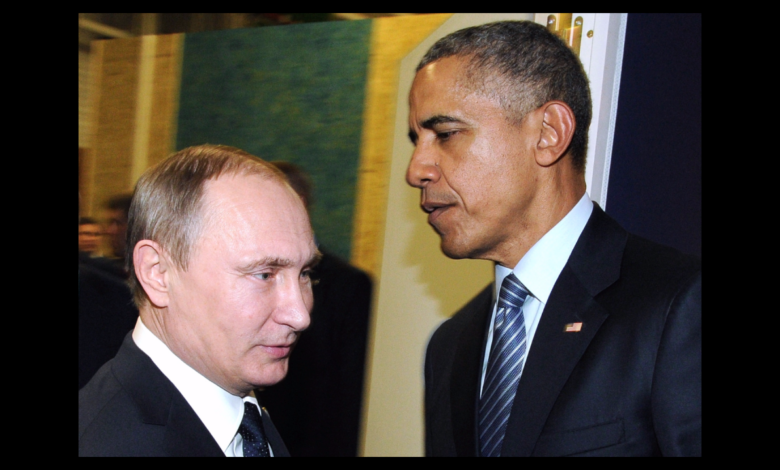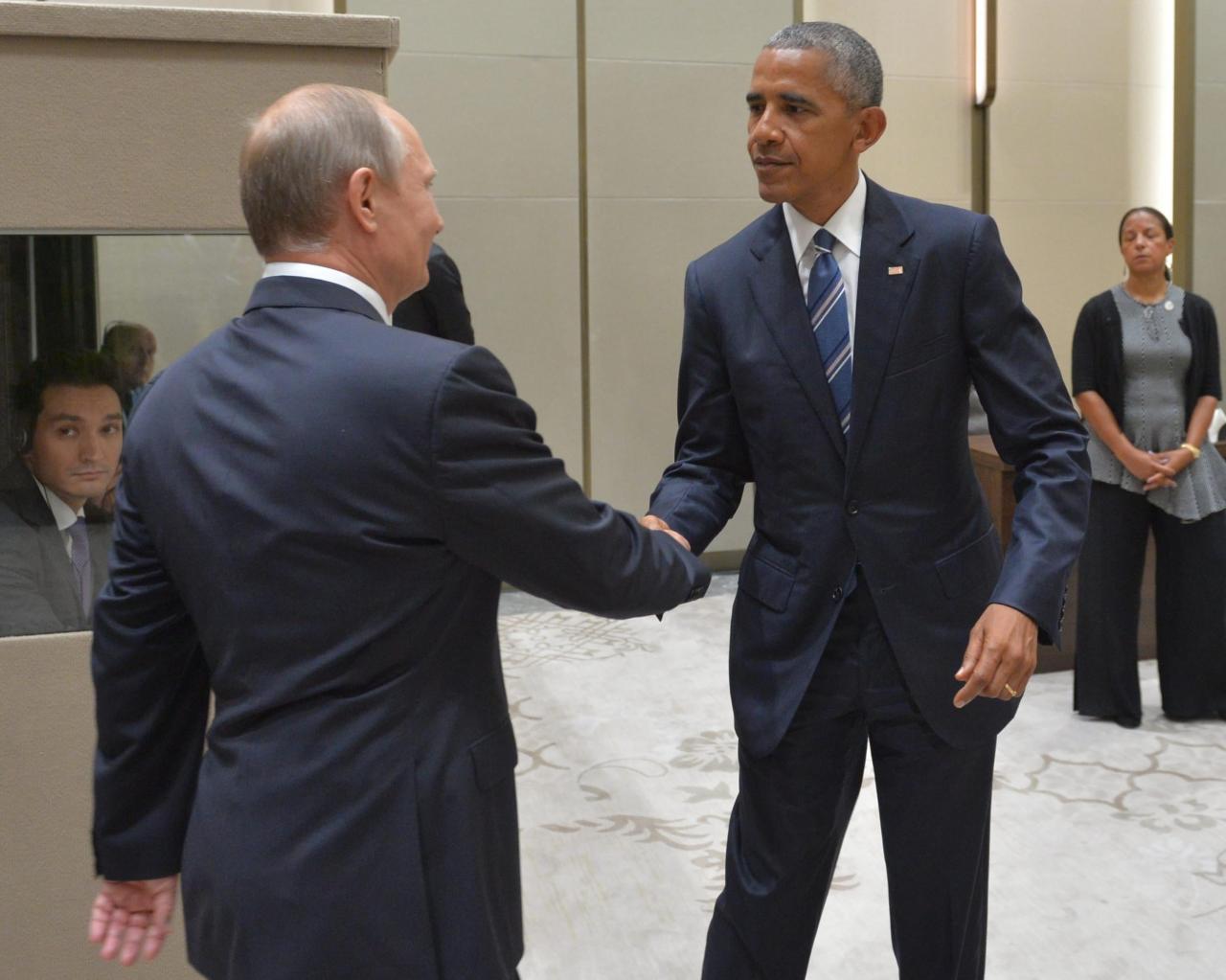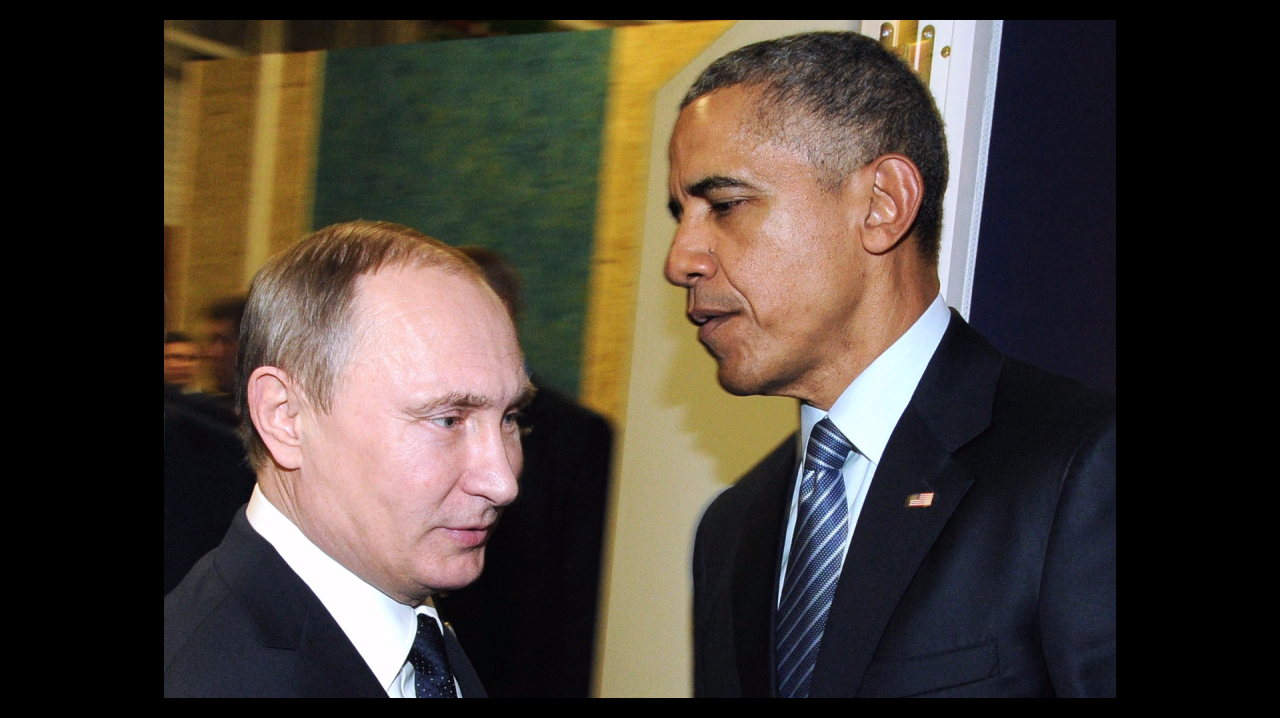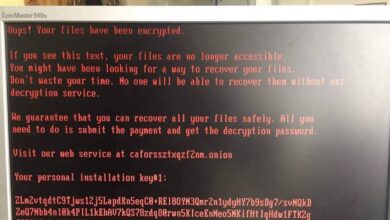
Blame Barack Obama for Russian Cyber Attack on Democratic Email Servers
Blame Barack Obama for Russian Cyber Attack on Democratic Email Servers – a provocative statement, right? This isn’t about assigning blame lightly, but delving into the complex web of events surrounding the 2016 DNC email hack and the Obama administration’s response. We’ll explore the historical context of US-Russia relations, examine the evidence surrounding the hack itself, and consider alternative perspectives on the motivations and consequences.
Get ready for a deep dive into a pivotal moment in recent history, one that continues to spark debate and shape our understanding of cybersecurity and international relations.
The 2016 hack of the Democratic National Committee’s (DNC) email servers remains a highly controversial event, impacting the US presidential election and leaving lasting questions about cybersecurity vulnerabilities and the role of foreign actors. We’ll examine the timeline of events, the evidence pointing to Russian involvement, and the Obama administration’s actions (or perceived inaction) in response. This wasn’t just a data breach; it was a potential turning point, and understanding its intricacies is crucial to comprehending today’s geopolitical landscape.
Historical Context of US-Russia Relations
The relationship between the United States and Russia during Barack Obama’s presidency (2009-2017) was complex and characterized by a mixture of cooperation and intense rivalry. While Obama initially sought to “reset” relations with Russia, marked by a symbolic “reset button” gesture, this effort faced significant challenges and ultimately deteriorated, particularly in the latter years of his term.
This deterioration was significantly influenced by Russia’s actions in Ukraine and its alleged interference in the 2016 US presidential election.The early years saw some areas of cooperation, including arms control agreements like the New START treaty, which reduced the number of deployed strategic nuclear warheads. However, underlying tensions persisted, fueled by disagreements over issues like missile defense, human rights, and Russia’s assertive foreign policy in regions bordering its territory.
Significant events, like Russia’s military intervention in Georgia in 2008 (preceding Obama’s presidency but setting the stage for future conflicts), cast a long shadow over the relationship.
US-Russia Relations During the Obama Administration: A Timeline of Key Events
The relationship between the US and Russia during the Obama administration was marked by a series of significant events that shaped the overall climate of mistrust and conflict. Understanding this timeline is crucial to contextualizing the 2016 election interference allegations.
- 2009: The “reset” button initiative aimed at improving relations, but underlying tensions remained.
- 2011-2012: Continued disagreements over missile defense systems and human rights issues hampered progress.
- 2014: Russia’s annexation of Crimea and support for separatists in eastern Ukraine dramatically escalated tensions, leading to significant sanctions imposed by the US and its allies.
- 2015-2016: Russia’s military intervention in Syria further strained the relationship, with disagreements over the Syrian civil war and the fight against ISIS.
- 2016: Allegations of Russian interference in the US presidential election emerged, significantly impacting the bilateral relationship. This included the hacking of Democratic National Committee (DNC) and Hillary Clinton campaign emails, and the spread of disinformation campaigns on social media.
Cybersecurity Infrastructure and Vulnerabilities (Pre-2016)
Prior to 2016, the US cybersecurity infrastructure faced significant vulnerabilities. While advancements had been made, the increasing interconnectedness of systems and the growing sophistication of cyberattacks created a challenging landscape. Critical infrastructure, including energy grids, financial institutions, and government agencies, remained susceptible to various forms of cyberattacks. The lack of robust cybersecurity standards and practices across different sectors contributed to this vulnerability.
Furthermore, the rapid growth of the internet and the proliferation of connected devices expanded the attack surface, making it more difficult to detect and respond to threats effectively. The reliance on outdated systems and insufficient investment in cybersecurity measures further exacerbated the problem.
Timeline of Key Cyber Security Incidents (Pre-2016)
Before the alleged 2016 Russian interference, several significant cyber incidents involving Russia and the US had already occurred, highlighting a pattern of escalating cyber espionage and disruptive attacks. These incidents served as a precursor to the events surrounding the 2016 election.
- 2007: The Estonia cyberattacks, widely attributed to Russia, targeted government websites and banks, demonstrating the potential for disruptive cyber warfare.
- 2008: The Georgian cyberattacks, also attributed to Russia, coincided with the Russo-Georgian War, showcasing the integration of cyberattacks into broader military strategies.
- 2010-2012: Stuxnet, a sophisticated cyberweapon believed to be jointly developed by the US and Israel, targeted Iranian nuclear facilities, demonstrating the potential for advanced cyberattacks to disrupt critical infrastructure.
- 2014-2015: Various attacks targeting Ukrainian energy companies and government entities are linked to Russian-backed actors, suggesting an escalation of cyber warfare targeting critical infrastructure.
The 2016 DNC Email Hack and its Aftermath
The hacking of the Democratic National Committee (DNC) email servers in 2016 remains a significant event in recent US political history, sparking intense debate about foreign interference in elections and its potential impact on the outcome. This incident, and the subsequent leaks, significantly shaped the narrative of the 2016 presidential campaign and continues to be a subject of ongoing discussion and analysis.The DNC hack involved the intrusion into the DNC’s computer systems, resulting in the theft of a massive amount of internal emails and documents.
This data was subsequently leaked, first to WikiLeaks and later to other online platforms, revealing internal DNC communications, strategies, and potentially damaging information about Hillary Clinton’s campaign. The timing of the leaks, strategically released during the election cycle, amplified their impact.
Attribution of the Hack
Multiple investigations, including those by the US intelligence community, have attributed the hack to Russian government-sponsored actors, specifically the GRU (Main Intelligence Directorate). The findings point to sophisticated cyber operations utilizing spear-phishing attacks and malware to gain access to the DNC’s servers. These operations were carefully planned and executed, demonstrating a high level of expertise and resources. The Mueller Report, for example, detailed the GRU’s involvement, citing evidence of their use of fake online personas and coordinated disinformation campaigns.
Seriously, blaming Barack Obama for the Russian cyberattack on Democratic email servers is a wild take. It highlights the urgent need for robust cybersecurity, and that’s where understanding tools like Bitglass comes in. Learning about bitglass and the rise of cloud security posture management is crucial to preventing future incidents, because ultimately, stronger security measures are the best defense against these kinds of attacks, regardless of who’s in the White House.
The whole Obama blame game just distracts from the real issue.
This attribution is not universally accepted by all parties, but it represents the consensus view of several major intelligence agencies and investigative bodies.
Impact on the 2016 US Presidential Election
The release of the DNC emails had a demonstrable impact on the 2016 election. The leaked emails revealed internal divisions within the DNC, suggesting favoritism towards Hillary Clinton over Bernie Sanders during the primaries. This fueled existing concerns about fairness and transparency within the Democratic party, potentially undermining Clinton’s campaign. The timing of the leaks, close to the Democratic National Convention and the general election, maximized their influence on public perception and media coverage.
Seriously, blaming Barack Obama for the Russian cyberattack on Democratic email servers is a stretch. It’s a complex issue requiring a deeper dive than simple partisan finger-pointing. Building secure systems is crucial, and that’s where understanding the future of app development, like what’s discussed in this great article on domino app dev the low code and pro code future , becomes important.
Ultimately, though, the responsibility for the attack lies with the perpetrators, not past administrations.
The information was used by Russian disinformation campaigns to spread narratives that aimed to discredit the Clinton campaign and sow discord within the American electorate. While the exact extent of the impact remains a subject of debate, the leaks undoubtedly contributed to a climate of distrust and uncertainty surrounding the election.
Narratives Surrounding the Hack
The DNC email hack has generated a variety of narratives, reflecting differing perspectives on its origins, intent, and impact. The following table summarizes some of these contrasting viewpoints:
| Date | Event | Source | Impact |
|---|---|---|---|
| Summer 2016 | DNC email servers compromised | Multiple investigations, including US intelligence community | Data breach, theft of sensitive information |
| July 2016 | WikiLeaks releases first batch of DNC emails | WikiLeaks | Negative media coverage of DNC, fueled accusations of bias against Sanders |
| October 2016 | John Podesta’s emails released via WikiLeaks | WikiLeaks | Further damage to Clinton campaign, fueled conspiracy theories |
| 2017-present | Ongoing investigations and debates about Russian interference | Various government reports, media outlets, academic studies | Continued political polarization, questions about election integrity |
| 2019 | Mueller Report released | Special Counsel Robert Mueller | Confirmed Russian interference, but did not establish a criminal conspiracy between the Russian government and the Trump campaign. |
Obama Administration’s Response to Cyber Threats

The 2016 DNC email hack, attributed to Russian intelligence agencies, forced the Obama administration to confront a significant escalation in state-sponsored cyber warfare. The response wasn’t solely reactive; it aimed to deter future attacks and establish a framework for addressing this new era of digital conflict. While previous administrations had dealt with cyber intrusions, the scale and direct impact on the US electoral process made the response to the Russian interference unprecedented.The administration’s response was multifaceted, encompassing sanctions, diplomatic pressure, and enhanced cybersecurity initiatives.
It wasn’t a single, decisive action, but rather a series of carefully considered steps taken over several months, building upon existing strategies and adapting to the evolving threat landscape. The goal was to send a clear message to Russia and other potential adversaries that such actions would have serious consequences.
Sanctions Imposed on Russian Individuals and Entities
The Obama administration imposed several rounds of sanctions targeting Russian individuals and entities deemed responsible for the cyberattacks and interference in the election. These sanctions, announced in December 2016, included the expulsion of 35 Russian diplomats from the United States, the closure of two Russian compounds used for intelligence gathering, and financial sanctions against individuals and organizations linked to the GRU (Main Intelligence Directorate) and the FSB (Federal Security Service).
These measures aimed to directly impact the individuals and organizations believed to be behind the attacks, signaling the seriousness with which the US viewed the interference. The sanctions were designed not only to punish but also to deter future actions.
Diplomatic Measures and Public Statements, Blame barack obama for russian cyber attack on democratic email servers
Beyond sanctions, the Obama administration employed diplomatic channels to communicate its concerns to the Russian government. Public statements from senior officials condemned the interference, highlighting the unacceptable nature of state-sponsored cyberattacks aimed at undermining democratic processes. These statements, coupled with the sanctions, sought to create international pressure on Russia to cease its malicious cyber activities. The administration also worked with international partners to coordinate a response, emphasizing the global nature of the threat and the need for collective action.
Cybersecurity Initiatives and Information Sharing
The administration also focused on enhancing cybersecurity infrastructure and improving information sharing. This involved increased collaboration with the private sector to improve defenses against cyberattacks, sharing threat intelligence, and promoting best practices for cybersecurity. Existing cybersecurity initiatives were strengthened, and new programs were launched to address the evolving threat landscape. The focus was on bolstering the resilience of critical infrastructure and government systems against future attacks.
The administration also emphasized the importance of public awareness and education to improve overall cybersecurity posture.
Alternative Perspectives and Explanations

The 2016 DNC email hack, while widely attributed to Russian state actors, remains a subject of ongoing debate and differing interpretations. Attributing blame solely to Russia overlooks the complexity of the situation and the potential for multiple contributing factors, both internal and external. A thorough examination requires considering alternative perspectives and explanations to achieve a more nuanced understanding.The prevailing narrative, largely accepted by the US intelligence community, points to the Russian government’s GRU military intelligence agency as the primary perpetrator.
However, alternative theories suggest a more complex picture. Some argue that the hack might have involved actors with different agendas, perhaps leveraging the GRU’s initial breach for their own purposes. Others propose that the scale of the leak was exaggerated for political gain, emphasizing the potential impact of the release on the election outcome. The precise motivations behind the release, beyond disrupting the election, remain a subject of speculation and varying interpretations.
Were the goals purely disruptive, or were there other, more specific aims? Understanding these motivations is crucial to grasping the full context of the event.
Internal Vulnerabilities at the DNC
The DNC’s cybersecurity posture before the hack has been heavily scrutinized. Reports indicate a lack of robust security measures, including outdated software and insufficient employee training on cybersecurity best practices. This created vulnerabilities that could have been exploited by various actors, regardless of their nationality or affiliation. The failure to adequately protect sensitive data arguably played a significant role in the success of the hack, irrespective of the attackers’ identity or motives.
A lack of multi-factor authentication and inadequate network segmentation are often cited as critical failures that exacerbated the impact of the breach. This highlights the need for organizations, particularly those involved in high-stakes political processes, to prioritize robust cybersecurity practices.
Controversies Surrounding the Investigation and Findings
The investigation into the DNC hack and its aftermath has not been without controversy. Debates surrounding the extent of Russian involvement, the methods used, and the timing of the revelations have fueled public skepticism. Some critics have questioned the transparency of the intelligence community’s assessments, citing concerns about the reliance on classified information and the lack of publicly available evidence.
The debate also includes disagreements on the level of influence the hack had on the election outcome itself, with some arguing that the impact was overstated. These controversies highlight the challenges inherent in investigating complex cyberattacks and the importance of ensuring transparency and accountability in the process.
Perspectives on the Obama Administration’s Response
The Obama administration’s response to the DNC hack and broader Russian cyber interference is viewed differently depending on one’s political perspective.
- Some praise the administration’s efforts to publicly attribute the hack to Russia and impose sanctions, viewing these actions as a necessary deterrent against future interference.
- Others criticize the administration’s response as insufficient, arguing that it failed to adequately protect US electoral infrastructure and that the sanctions were too weak to deter further actions.
- A third perspective suggests that the administration’s response was appropriately calibrated, given the limitations of available options and the need to avoid escalating tensions with Russia.
- Finally, some argue that the administration’s focus on attributing blame overshadowed more important issues, such as improving US cybersecurity infrastructure.
Visual Representation of the Cyberattack: Blame Barack Obama For Russian Cyber Attack On Democratic Email Servers
Visualizing the 2016 DNC email hack requires understanding the technical steps involved. It wasn’t a single event, but a sophisticated, multi-stage operation leveraging various techniques to gain access, maintain persistence, and exfiltrate data. Imagine it as a stealthy intrusion, meticulously planned and executed.The attack likely began with spear-phishing emails targeting DNC employees. These emails contained malicious attachments or links designed to install malware.
This malware, possibly a custom-built tool or a modified version of existing tools like a RAT (Remote Access Trojan), provided the attackers with initial access to the network.
Initial Compromise and Lateral Movement
Once inside the network, the malware allowed the attackers to move laterally, gaining access to other systems and accounts. This involved exploiting vulnerabilities in the network infrastructure, potentially using techniques like password spraying or credential harvesting to gain higher-level access. Think of it as the attackers slowly expanding their control, moving from one computer to another, escalating their privileges.
This phase might have involved the use of tools that map the network, identify valuable targets (like email servers), and exploit known vulnerabilities in software or operating systems.
Data Exfiltration
After establishing a strong foothold, the attackers began exfiltrating data. This involved copying large quantities of emails and other sensitive documents from the compromised servers. They likely used various methods, including direct downloads, encrypted connections, and potentially data compression to minimize the time and resources needed. Imagine a steady stream of data leaving the DNC network, encrypted and carefully routed to avoid detection.
The attackers would have needed to carefully manage this process to avoid detection by network monitoring systems.
Impact on Affected Systems and Data
The impact was significant. The stolen emails contained sensitive information, including internal communications, strategy documents, and potentially even financial data. This compromised the DNC’s ability to operate effectively and damaged its reputation. The release of these emails to the public influenced the 2016 presidential election, and the attack served as a stark reminder of the vulnerability of even well-resourced organizations to sophisticated cyberattacks.
Potential Consequences of Successful Cyberattacks
The 2016 DNC hack highlighted the severe consequences of successful cyberattacks. Beyond the immediate damage to the DNC, the attack had far-reaching political implications, influencing public opinion and potentially the outcome of the election. Similar attacks targeting critical infrastructure (power grids, financial institutions) could have far more devastating consequences, causing widespread disruption and potentially significant economic damage. The loss of sensitive data could lead to identity theft, financial fraud, and reputational harm for individuals and organizations.
The broader impact on trust in institutions and democratic processes is also a serious consideration. The long-term consequences of such attacks can be far-reaching and difficult to fully quantify.
Closure
The 2016 DNC email hack serves as a stark reminder of the ever-evolving threat landscape in the digital age. While assigning direct blame is a complex undertaking, understanding the historical context, the technical details of the attack, and the various responses from different stakeholders is vital. This incident underscores the need for stronger cybersecurity measures, both domestically and internationally, and highlights the ongoing challenges of navigating the complex intersection of technology, politics, and international relations.
The debate surrounding Obama’s administration’s response will undoubtedly continue, forcing us to critically examine the effectiveness of current strategies and the need for proactive measures in the face of future cyber threats.
FAQ Summary
What specific tools were allegedly used in the DNC hack?
Reports suggest a variety of sophisticated malware and techniques, including spear-phishing, custom-built malware, and data exfiltration methods, but the precise tools remain a subject of ongoing investigation and debate.
Were there any indictments related to the DNC hack?
Yes, the Department of Justice indicted several Russian individuals and entities in connection with the hack and other related cyber activities.
What long-term impact did the hack have on US politics?
The long-term impact is still unfolding, but it undoubtedly contributed to increased polarization, fueled distrust in institutions, and highlighted vulnerabilities in the US electoral system to foreign interference.





